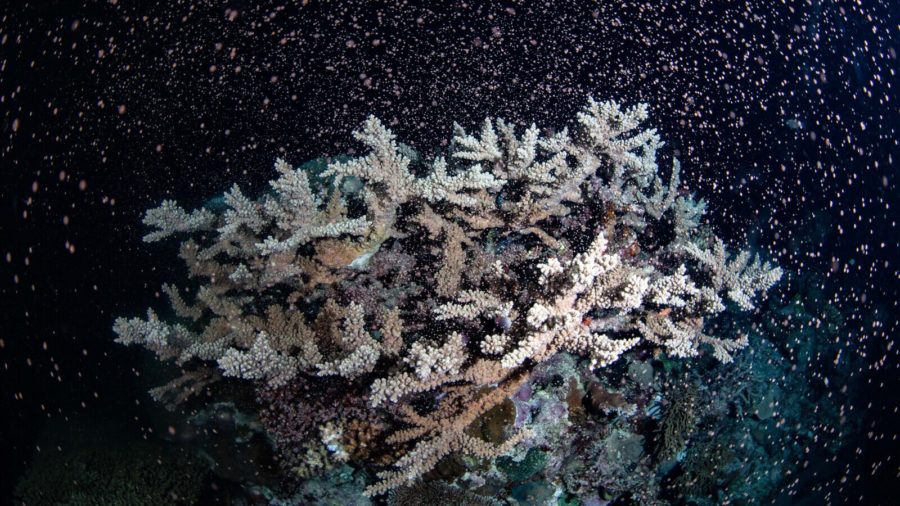Described as the world’s biggest sex event, see this remarkable event in videos.
The world’s largest coral reef system, known as the Great Barrier Reef is composed of 2,900 individual reefs encompassing an area of approximately 133,000 sq mi is currently undergoing it’s annual spawning.
The following written content from Kristy Sexton-McGrath
The corals of the Great Barrier Reef have spawned in an annual simultaneous mating event
Trillions of eggs and sperm have been released into the ocean overnight Scientists hope this year’s reproductive cycle can revitalise the world’s largest reef. The coral spawning event saw trillions of eggs and sperm released in to the ocean in large plumes of red, yellow and orange, in order to reproduce.
Marine biologist Gareth Phillips and his team captured what’s been coined as “sex on the reef” off the coast of Cairns last night on the outer edge of Flynn Reef.
“The conditions were magical with the water like glass and beautiful light coming from the moon,” Mr Philips said. “It was absolutely amazing.”
“We are currently sitting out on Flynn Reef and there’s big slicks of coral spawning on the surface, it’s just incredible.”
Mr Phillips said conditions have to be just right for the reef to erupt — it only happens at night, several days after a full moon, the ocean must be calm and water temperatures above 26 degrees for a full month.
He and his team will spend the next few days travelling to other reef sites, as part of the Coral Index Project, in what he likens to a scientist’s ‘annual reef stock take.’
“With this project, we hope to show the variability and diversity of the reef. It’s a way of checking in on sites and monitoring their health.”
Coral spawning event key for survival of reef
This year’s mass spawning is a welcome sight for reef researchers amid the severe coral bleaching that hit the reef in 2020.
Mr Phillips said the reef “hadn’t looked as good as it has for a long time.”
“This spawning event is another sign that the reef is recovering, it is not all doom and gloom for the reef, it is looking amazing and it is very encouraging to see it bouncing back.” Read more from ABC AU





